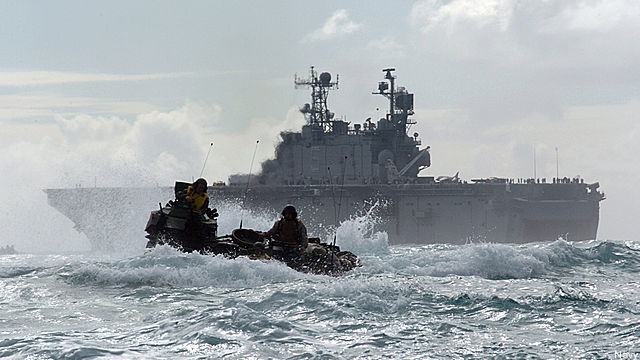Budget Pressure Forces Compromise On Amphib Fleet
Posted on

WASHINGTON: In the military, you can’t always get what you want but you can usually get what you need. And looming budget cuts are forcing the Marine Corps to do just that with its future amphibious fleet, according to a top service general.
Neither the Marines nor the Navy have backed off the Corps’ requirement for a 38-ship amphibious fleet, Marine Corps Lt. Gen Dennis Hejlik said last week. But “together . . . we’ve accepted that in light of fiscal constraints the Navy will sustain a lesser total of 33 ships in the assault echelon,” the Marine Corps Forces Command chief said in a Dec. 2 post on the command’s blog.
A recent Congressional Budget Office review of the Navy’s shipbuilding plan said the Navy won’t be able to reach 33 amphibs in the fleet until 2016. That number of amphibs will dip below 33 ships and “at no point . . . would the force reach the Marine Corps’ objective of 38 amphibious ships,” according to the report. Taking the glass-half-full approach, Hejlik points out the Marines are still getting 20 new ships from the Navy plan. Ships that represent “a significant investment for a U.S. Navy that has a lot of other demands placed on it,” he wrote. There will be no shortage of work once those ships hit the fleet, he added.
Hejlik dismissed the “absurd notion” the Marines tacked on additional missions to the amphib fleet to make the case for more ships. “The reality is quite the opposite; it is the combatant commanders that are driving the demand, and that demand is dramatically outstripping U.S. naval capacity across the board,” the three-star general added. The Marines have been well aware of this problem for some time and have been lobbying hard to fit it. But so has the Navy, according to Hejlik.
The question over how many amphibs to put into the fleet is not a case of Navy versus the Marine Corps, the three-star general said emphatically. The sea service is feeling the crunch just as much as their service brethren. “The requirement for amphibious ships is a naval issue,” he said. “The Navy and Marine Corps. . . share the common view that investment in naval forces to meet [combat commander] demands not only serves our current national interests, it also stands to mitigate substantial risk in the future security environment.”
Turf wars inside the Pentagon are nothing new. And things are almost guaranteed to get more tense as the department and services begin really feeling the heat from looming budget cuts. But in the bureaucratic battle to keep the amphibious fleet viable, there’s no question that the Navy and Marine Corps are on the same team, according to Hejlik.
Subscribe to our newsletter
Promotions, new products and sales. Directly to your inbox.
